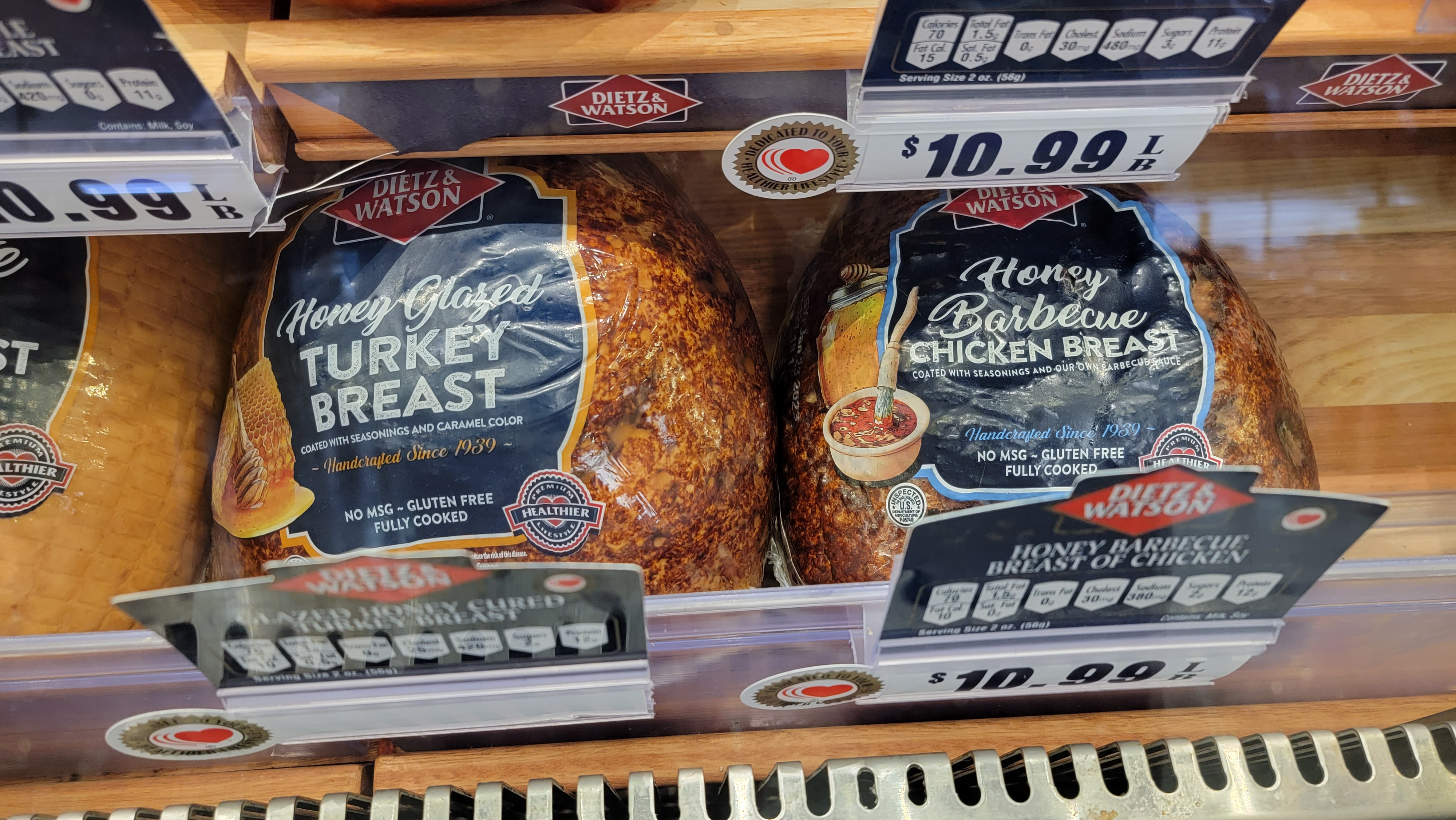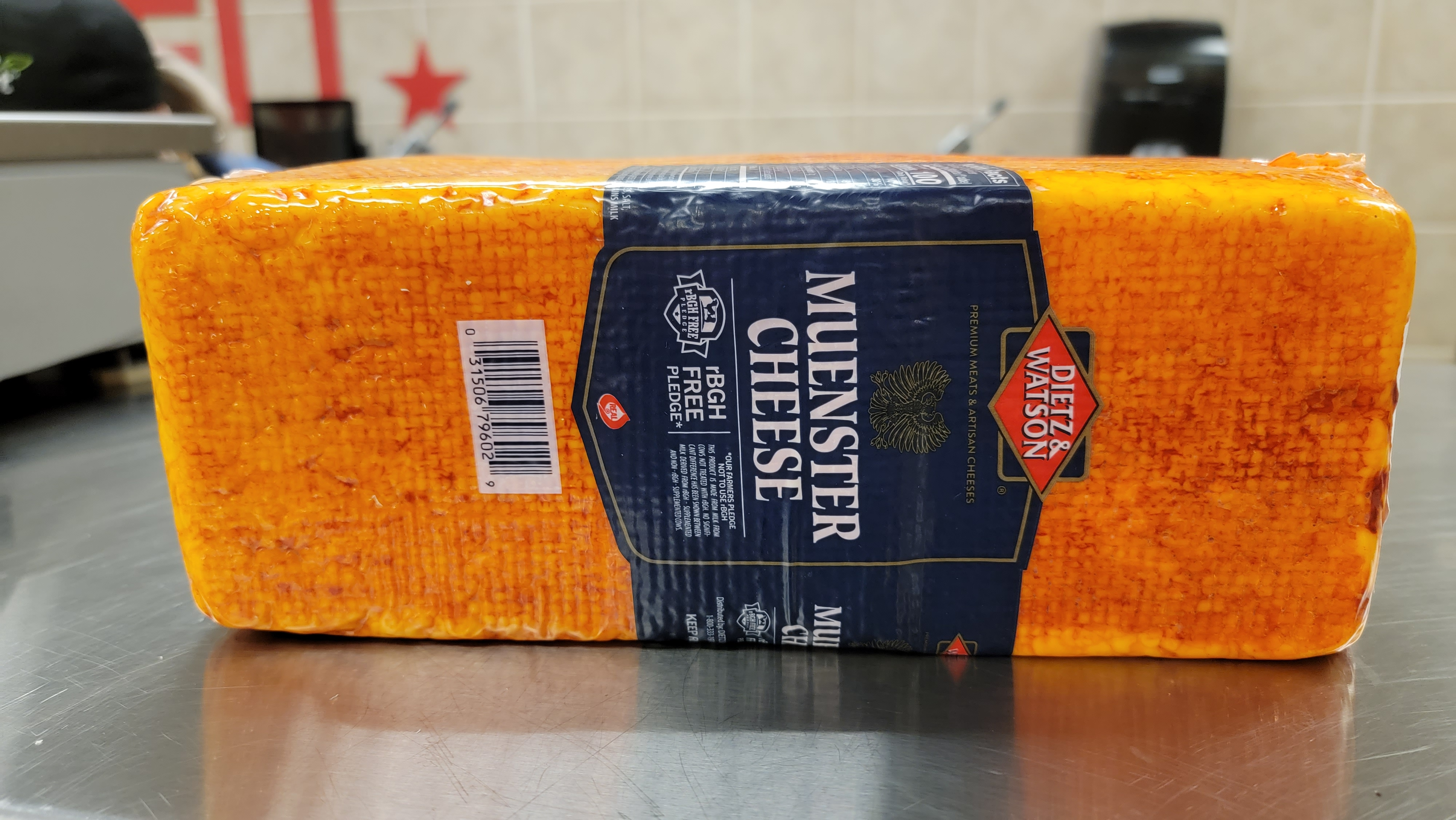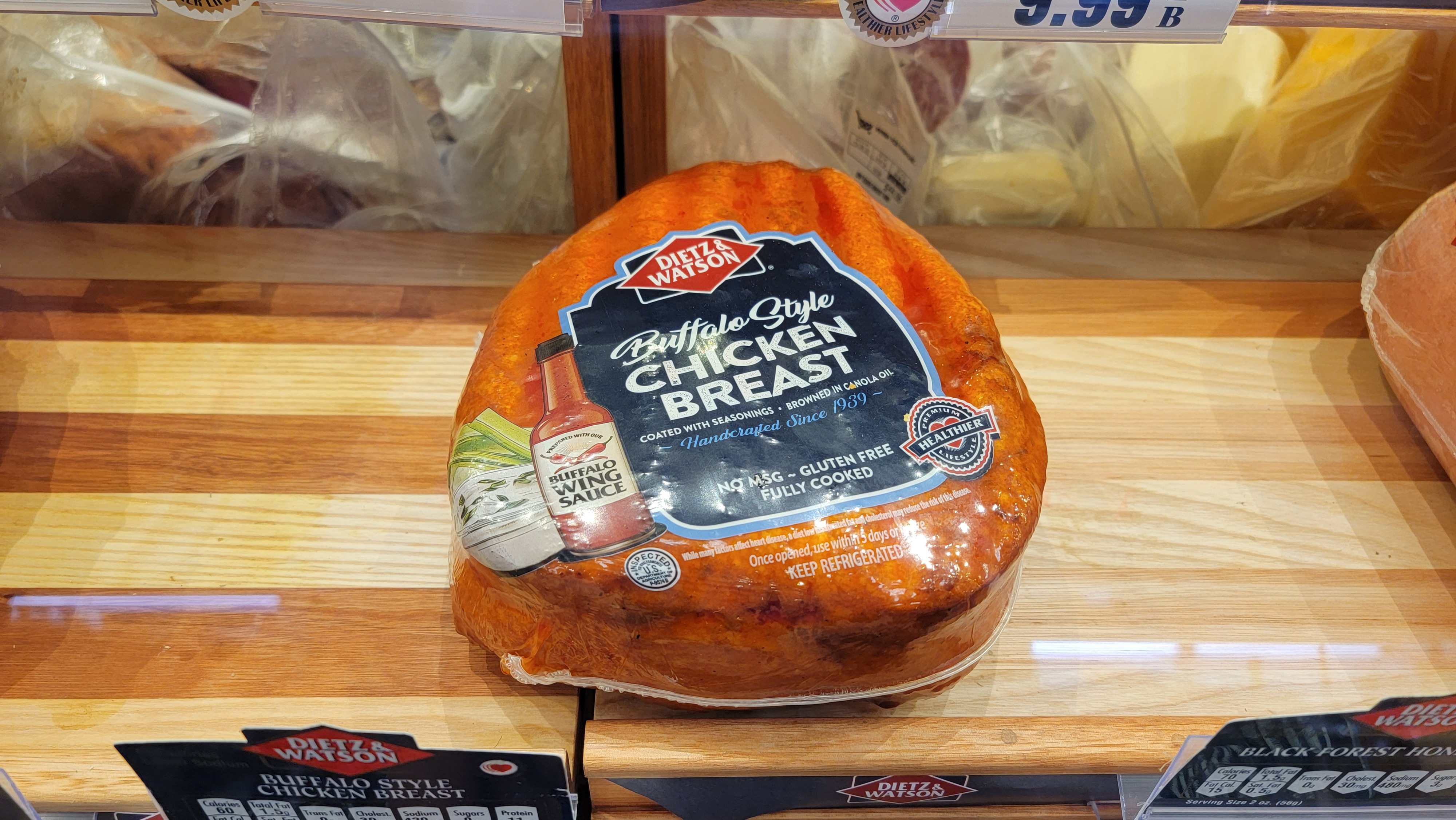The Worst Meats And Cheeses To Cut, According To Deli Workers
When it comes to operating a slicer, these cold cuts are the dirt wurst.
The deli case at your local grocery store is more than a parade of meats and cheese—it's also a veritable rogue's gallery. Behind the curved glass, there are certain items that, though incredibly tasty, are the bane of those who have to cut them.
For me, it was always the messy ones. There are plenty of food service regulations when it comes to periodic cleaning of the equipment, and maintaining a sanitary work area is vital. But if a single, half-pound order requires a near-total breakdown of the slicer (I'm looking at you, Buffalo Chicken Breast), the meat becomes villainous in itself.
Throughout my time working at the deli, I most enjoyed my colleagues and I swapping horror stories as a method of collective coping. Over the last two weeks, I asked workers at multiple grocers a simple question: Price and flavor aside, which meats and cheeses were the most annoying to work with?
The results were broader than expected, except for the very last one. That item is hated with a universal passion, and was the first product mentioned by almost every person I surveyed. Here are the prime deli offenders.
Aged Cheeses
Aged cheese is delicious. Cheddar, Swiss, whatever you like—those few years spent in storage make for a sharp flavor that's perfect for charcuterie boards or sandwiches. Unfortunately, it also makes them a bit harder to slice. Aged cheeses tend to crumble more than their young counterparts, leaving trace particles in the nooks and crannies of the slicer.
This is a shame, and for more than one reason. Not only does it require extra time to clean up, it also means that you're losing bits of sellable weight. If you have the time and a sharp knife at home, you may be better served by cutting this cheese yourself. At least on your own counter, you're allowed to eat the crumbs.
Polish Ham
We've talked about this one before. When a former coworker singled out Polish ham as one of their least favorite meats to cut, the memories came rushing back. On the surface, it seems like a simple meat. It's rectangular, unglazed, and usually not too juicy.
But the problem comes with the texture. Pigs don't grow in naturally geometric shapes, so these hams are pressed into form. It's not the messiest protein to cut, but it can be rather dense.
Muenster Cheese
By its appearance, Muenster is visually appealing. That bright orange rind and the creamy white of its interior provide a nice contrast, and one wide slice will perfectly cover a sandwich.
But when you compare its ultra-mild flavor to the woeful mess it creates, Muenster is simply not worth it. That orange rind will cling to the blade, the carriage, and any part of a knife or slicer it comes into contact with. And if you don't get it off immediately, it'll harden. This was unquestionably my personal least favorite to cut, and was the most-hated cheese among the workers I surveyed. Other items can be messier. But Muenster requires the most pressure to remove, and at least double the paper towels or cloths.
Buffalo Chicken, Italian-Style Roast Beef, or anything with a sticky sauce
Piled high on a sandwich or wrap, each of these are super delicious. The problem here lies not in the flavor, but in the sauce. Sure, that vivid orange of the Buffalo Chicken sets my mouth to watering. But as soon as it hits the spinning blade, that stuff gets everywhere.
It's the same with BBQ Glazed Turkey or juicy Italian-Style Roast Beef. While the pepper-crust of pastrami may add just a touch of spice if it happens to cross-pollinate, a thick sauce or juice has the potential to completely alter the flavor of the next meat to be cut. That means that, each time these are sliced on-demand, a worker needs to clean the nearly the entire assembly. This slows down the service process, and can irritate the more impatient customers. But unless you want Buffalo-flavored ham, know that there's an extra step involved.
Olive Loaf
From its flabby texture to the little pieces of pimento that fly out and stick to the wall, olive loaf is the pits. Every single person I spoke to listed this lunchmeat as the top-tier offender. This mirrors my own personal memories of the stuff, down to the unpleasant process of opening a new loaf. There's this processed meat-goo that pools in the wrapping, along with an orange, congealed fat that clings to the exterior. At least, this was the case with the cheaper brands that we served.
Because the olives break up the structural integrity of the meat, the slices tend to fall apart if you cut them too thin. And it's always ordered thin, because even the folks who enjoy this meat can't stomach more than a couple millimeters to a slice. To be clear, we're not talking about something on the high-end like a good mortadella. This stuff is pure mystery meat, with some green thrown in for color.
The common denominator among the prime villains of the deli case the to be messiness. Anything that sends juice or particles spraying in every direction will, by definition, require additional effort and attention. And when the line at the counter stacks up, those precious moments spent cleaning the slicer begin to cut into both sanity and service time.


